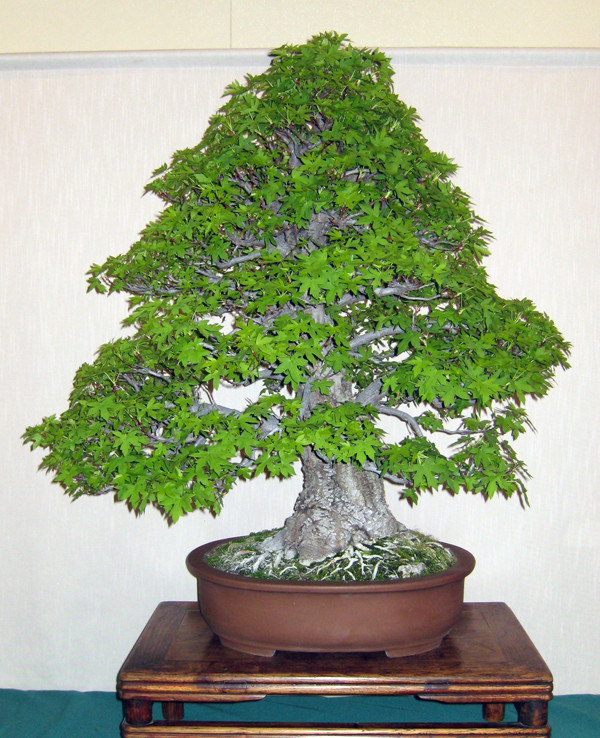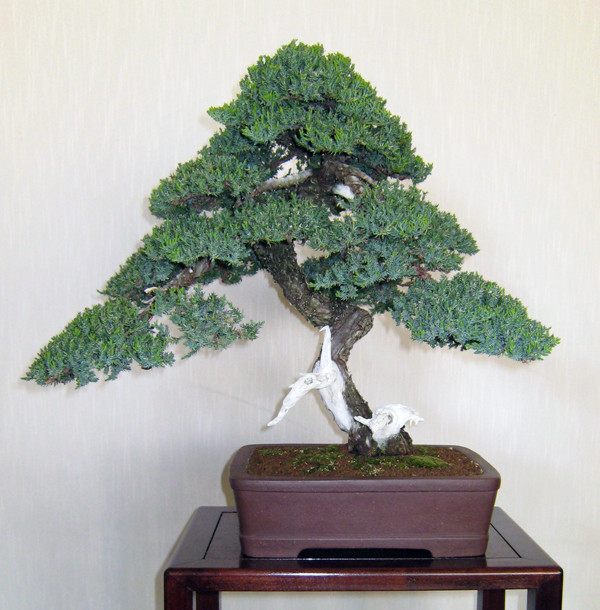March 2008 Newsletter
President’s Message
Now’s the Time To Sharpen Skills
By Ken Fuentes
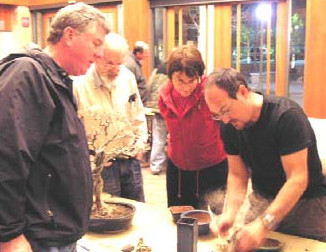 Photo by: David E. Whiteside |
| CVBS President Ken Fuentes (right) demonstrating bonsai technique at a club meeting. |
What are you doing today to improve your bonsai skills?
Your collection is coming to life and providing an excellent opportunity to call on your creative side in planning a future for each tree. Take a moment to look at your material, spin the tree around, check roots, trunk, and branches to see if any changes have taken place that would affect your final design.
Take it a step at a time by selecting a front. You might see a feature that makes the tree more interesting. Peg it with a stick or marker of your choice. This is a good practice that can prevent the mindless cutting of a needed branch, especially if you have a large collection.
After selecting a front, decide what the tree needs to move it closer to your envisioned design. Trees are beginning to grow now, so this is a perfect opportunity to pinch and prune stronger growth to send energy to inside branches and weaker areas of your tree. It is possible using these techniques to get two years of branch development in one growing season.
Keep your tops thinned out to allow sun to reach inner branches. You may need to grow a branch or add a branch by grafting, so make a determination before you prune any long shoots that can be used for “Approach Grafting.”
through them for that one forgotten idea that can make an improvement to one of your favorite trees.
I hope that any one point I have mentioned will help you this month. I look forward to seeing everybody at the Muranaka Bonsai Nursery visit on March 15th.
Program Notes
Rafting with Ted Matson
By Deborah Ervin
Our March speaker will be Ted Matson, a well-known and popular bonsai teacher not only here in Southern California where he lives, but increasingly all over the U.S. At our March 20 meeting, he will demonstrate raft-style bonsai, using a specimen from his personal collection plus a piece of material he is generously donating to the club.
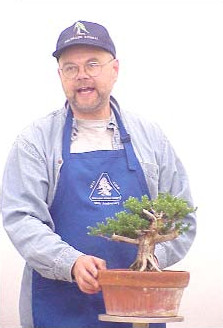 |
| Ted Matson |
Ted began studying bonsai in 1979 in San Francisco, where he learned the basics under John Boyce. He moved to Los Angeles in 1980, where he became involved in a number of clubs and began a serious pur-suit of the art, taking classes from leading masters in Southern California, including Ben Suzuki, Shig and Roy Nagatoshi, Melba Tucker, Warren Hill, and John Naka.
Ted was urged to get into teaching by Melba Tucker, and he started offering classes at his home in Pasadena in 1988. Today, in addition to his own classes, he maintains a busy teaching schedule, travel-ing to nurseries, clubs, and study groups throughout the state of California and across the U.S. for workshops and critiques.
Also an in-demand demonstrator, Ted has conducted numerous programs and workshops at several bon-sai conventions and conferences, and has been appearing more as a headliner/featured artist for major bonsai events.
Along with Jim Barrett, he was the co-chair of the Golden State Bonsai Federation Convention XVIII in 1995 and, in February of 2000, chaired the California Shohin Society Seminar 2000. In addi-tion, he has served as committee chairs for several GSBF and CBS conventions. Ted currently serves as President of the GSBF—the statewide organization of bonsai clubs (CVBS is a member).
Although Ted is a lover of shohin bonsai, his collection includes trees of all sizes, styles, and a range of species. They are known for their proportion, refinement, and detail.
Perhaps most notable of his bonsai is a seven-tree Foemina juniper grove on a granite slab that was selected for photographic display in the 1999 JAL World Bonsai Contest. In February 2000, the tree was featured in an article in the Bonsai Shunju, the official publication of the Nippon Bonsai Association. When he’s not prac-ticing bonsai, Ted is a freelance writer.
Some of our club’s members, including our newsletter editor, David Whiteside, study with Ted.
Expert Bonsai Tips
March 2008: Lion or Lamb?
By Jim Barrett
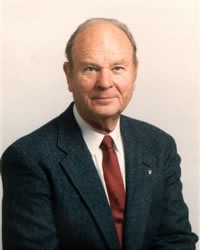 Transplanting wisteria after blooms are gone: If you plan to do this, don’t fertilize for at least one month after repotting. If you have wisteria and do not plan to repot, fertilize right after the blooms are gone. It is said that wiste-ria require three to four times as much fertilizer as most bonsai. Just make sure the fertilizer you use is slow release. Fer-tilize quince, ume [Prunus mume, an Asian “plum,” actually more closely re-lated botanically to the apricot—ed.], crabapple, and pomegranate this month. Do not fertilize satsuke azaleas until blooms are gone.
Transplanting wisteria after blooms are gone: If you plan to do this, don’t fertilize for at least one month after repotting. If you have wisteria and do not plan to repot, fertilize right after the blooms are gone. It is said that wiste-ria require three to four times as much fertilizer as most bonsai. Just make sure the fertilizer you use is slow release. Fer-tilize quince, ume [Prunus mume, an Asian “plum,” actually more closely re-lated botanically to the apricot—ed.], crabapple, and pomegranate this month. Do not fertilize satsuke azaleas until blooms are gone.
Repotting can still be done on black pine, junipers, pomegranate, and aza-leas. If you plan to repot azaleas, you can still trim fairly severely. Most deciduous trees should be in full leaf by now, so wait until the new growth has hardened if you plan to repot maples, elm, horn-beam, and Zelkova.
We have had reports of wooly aphids appearing on apple, quince, and other plants attractive to aphids. Malathion with a little Volck Oil mixed in should do the trick. The oil allows the malathion to stick and penetrate the white fuzz covering the little critter. Spray again in about 10 days. This treatment will also take care of regular aphids and spider mites.
Start fine-tuning show trees. Trees to be shown should not have large-gauge wire on trunks or visible on large branches. It is, however, permissible to have wire on medium to small branches pro-viding it is neatly applied. Annealed copper or anodized aluminum are preferred wire choices.
If you wish to darken bright copper wire, soak it overnight in purex or diluted muratic acid (swimming pool acid.) Wash it with clear water before using. Start getting rid of moss growing on trunks and base roots. Be careful not to damage rough bark trees such as black pine and cork bark elm.
Are you planning to change pots before the show? Do it now so the tree will look settled in its show container. This is a common practice in Japan. The show pot is then stored away after the show and the tree is returned to its everyday pot.
Centeno’s Corner
Spring: Time for Basic Bonsai Care
By Paul Centeno
It is time to focus attention on basic bonsai care and look forward to plan for all of 2008. Spring starts on March 20 (see story at left) and, for bonsai-care purposes, runs through April and May. Sum-mer is June – August; Fall/Autumn is September – November; and Winter runs December – February.
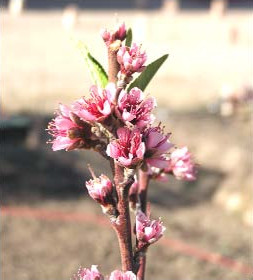 Photo by: David E. Whiteside |
| Is it spring? These Babcock Peach blossoms in the nearby Santa Paula Valley, although not a bonsai, seem to think it. |
By this time, many of your bonsai should have been repotted already. Spring is growing season. Fertilizer can be applied to help bonsai trees grow and produce greener foliage.
Pinching can also be done during the growing season to thicken the foliage. It is also important to always read the fertilizer label and directions. Do not feed the bonsai right after re-potting. Wait at least two to four weeks before applying fertilizer.
Repotting must be done periodically to replace the old soil with new soil every one to two years. It is necessary to balance the root system with the top growth.
The soil must be kept moist during growing season. Watch for insects and disease such as aphids, spider mites, scale, and roots aphids. These are common problems and be controlled by spraying bottled water mixed with soap detergent. It is done by spraying the top of the foliage, then under the foliage and rinse with water [after] 20 minutes.
Trimming, training, and wiring are basic care for bonsai to keep the bonsai in a miniature appearance. The tree is wired to assist in getting branches to grow in a specific position and enhance the appearance of the bonsai tree. The wire is removed after six or more months. The branches should then stay in those positions on their own.
Trim the branches to expose the trunk of the tree, to shape the tree into the look you want. The goal is to make the bonsai tree look older.
Season Notes
This Isn’t Your Father’s Equinox
By David E. Whiteside
Did you know that the Vernal Equinox is not a day—it’s just an instant in time—and that the same is true of the Autumnal Equinox? Ditto for the Winter and Summer Solstices.
Technically, a solstice is that instant when the Sun is at its farthest point north or south of the equator, depending on whether it’s the summer or winter solstice, respectively. In contrast, an equinox is when the sun is exactly over the equator it’s the Vernal Equinox when the Sun’s apparent movement is northward, the Autumnal Equinox when it’s headed south. As a consequence of the sun’s position, the length of the day and the night are almost equal at each equi-nox—a term that derives from the Latin for “equal” and “night.”
This year, the Vernal Equinox will occur at 10:48 PM, Pacific Daylight Time, on March 19. Most calendars mark March 20 as the first day of spring; in Japan, the 20th is celebrated as Vernal Equinox Day.
And here’s a bit of tough news for those of us who grew up thinking the March 21 usually would mark the beginning of spring: In the 21st Century, a March 21 equinox will be rare. As this year, it will more often fall on the 20th or earlier.



